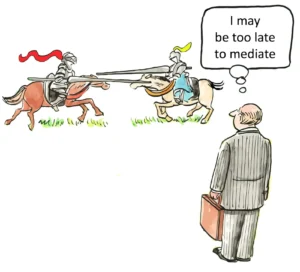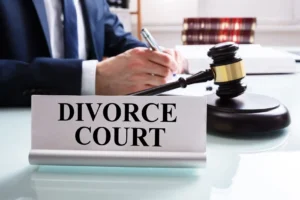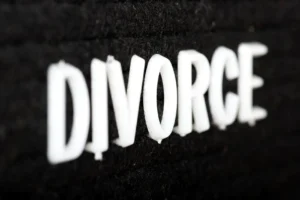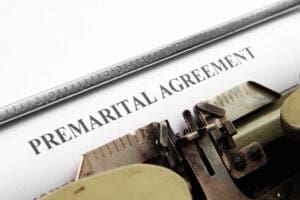How to File a Personal Injury Claim: A 7-Step Guide
Individuals facing unexpected injuries from accidents frequently ask, “How do I properly file a personal injury claim to protect my legal rights?” Filing a personal injury claim requires understanding specific legal procedures, documentation requirements, and strategic timing that can significantly impact the outcome of your case. Unlike casual assumptions about injury claims, the process involves multiple critical steps that demand careful attention to detail and adherence to strict legal deadlines.
The personal injury claim process serves as a fundamental mechanism within our legal system. It allows injured parties to seek compensation for damages while ensuring accountability for negligent actions. This comprehensive guide examines the seven essential steps for filing a personal injury claim. Each step builds upon the previous one to create a strong foundation for potential recovery.
Modern personal injury law operates within specific frameworks designed to balance the rights of injured parties with fair legal processes. Understanding these frameworks becomes crucial when navigating insurance companies, medical documentation, and legal deadlines. The following detailed examination provides essential knowledge for anyone considering a personal injury claim.
What Constitutes a Valid Personal Injury Claim?
Personal injury claims arise when one party’s negligence or intentional actions cause harm to another person. Valid claims require establishing four key elements: duty of care, breach of that duty, causation, and measurable damages. These elements form the legal foundation upon which successful claims are built.
Duty of care represents the legal obligation individuals have to act reasonably to avoid causing harm to others. This duty varies depending on circumstances and relationships between parties. For example, drivers have a duty to operate vehicles safely, property owners must maintain safe premises, and medical professionals must provide care meeting established standards.
Breach of duty occurs when someone fails to meet their legal obligations. This failure can involve action or inaction that deviates from reasonable standards. Determining breach requires comparing actual behavior against what a reasonable person would have done in similar circumstances.
Causation links the defendant’s breach of duty directly to the plaintiff’s injuries. Both factual causation and legal causation must exist. Factual causation asks whether injuries would have occurred “but for” the defendant’s actions. Legal causation examines whether the harm was a foreseeable consequence of the defendant’s conduct.
Measurable damages represent the actual losses resulting from the injury. These damages can include medical expenses, lost wages, pain and suffering, and property damage. Without quantifiable harm, no valid claim exists regardless of how egregious the defendant’s conduct may have been.
Step 1: Seek Immediate Medical Attention
Medical treatment following an injury serves dual purposes: addressing health concerns and creating essential documentation for legal claims. Seeking prompt medical attention establishes a clear connection between the incident and resulting injuries while ensuring proper treatment begins immediately.
Many injuries from accidents do not manifest symptoms immediately. Adrenaline and shock can mask pain and other symptoms for hours or even days after an incident. Delayed medical treatment creates opportunities for insurance companies and opposing counsel to argue that injuries resulted from intervening causes rather than the original incident.
Medical records provide objective evidence of injury severity, treatment requirements, and prognosis. Healthcare providers document symptoms, diagnose conditions, prescribe treatments, and track recovery progress. These records become crucial evidence supporting damage claims throughout the legal process.
Emergency room visits create immediate documentation of injuries and their connection to specific incidents. Emergency medical personnel routinely record how injuries occurred and their initial assessments. This contemporaneous documentation carries significant weight in legal proceedings.
Follow-up medical care demonstrates the ongoing impact of injuries and commitment to recovery. Consistent medical treatment shows that injuries are genuine and require professional intervention. Gaps in medical treatment often weaken claims by suggesting injuries are not as severe as claimed.
Step 2: Document Everything at the Scene
Accident documentation provides critical evidence supporting injury claims. Thorough scene documentation preserves important details that may become disputed or forgotten as time passes. This documentation often determines whether claims succeed or fail.
Photograph the accident scene from multiple angles, capturing vehicle positions, property damage, road conditions, weather conditions, and any relevant signage or traffic signals. Modern smartphones make comprehensive photographic documentation easily accessible. Take more photos than seem necessary, as important details may only become apparent later.
Collect contact information from all parties involved in the incident, including full names, phone numbers, addresses, insurance companies, and policy numbers. Obtain driver’s license numbers and vehicle registration information when applicable. This information enables proper notification of insurance companies and identification of responsible parties.
Identify and interview witnesses who observed the incident. Collect their contact information and ask for brief statements about what they witnessed. Witness testimony often proves crucial when parties dispute how incidents occurred. Independent witnesses provide objective perspectives that strengthen claims.
Note environmental conditions that may have contributed to the incident, such as weather conditions, lighting, road surface conditions, and visibility factors. These details help establish context and may reveal additional factors supporting liability claims.
Create written notes describing exactly how the incident occurred, including the sequence of events leading up to the accident. Write these notes as soon as possible while memories remain fresh and accurate. Include times, locations, and specific details about actions taken by all parties involved.
Step 3: Report the Incident to Relevant Authorities
Incident reporting creates official records that support injury claims and ensures proper investigation of accidents. Different types of incidents require reporting to different authorities, and timing requirements vary by jurisdiction and incident type.
Motor vehicle accidents typically require reporting to local police departments or state highway patrol agencies. Most states mandate police reports for accidents involving injuries, significant property damage, or disputes about fault. Police officers investigate accident scenes, interview parties and witnesses, and create official reports documenting their findings.
Workplace injuries must be reported to employers and may require notification to state workers’ compensation boards or the Occupational Safety and Health Administration. Timing requirements for workplace injury reporting are often strict, with some requiring notification within 24 hours of incident occurrence.
Slip and fall accidents on commercial properties should be reported to property owners or managers immediately. Request that they create incident reports documenting what occurred. Many businesses have specific procedures for documenting accidents that occur on their premises.
Product-related injuries may require reporting to manufacturers and potentially to the Consumer Product Safety Commission. Defective products that cause injuries trigger specific reporting requirements and may contribute to broader safety investigations.
Official reports provide independent documentation of incidents and often include professional assessments of contributing factors. These reports carry significant weight in legal proceedings because they represent findings by trained investigators with no financial interest in claim outcomes.
Step 4: Gather and Organize Evidence
Evidence collection forms the backbone of successful personal injury claims. Comprehensive evidence gathering requires systematic approaches to preserving and organizing multiple types of documentation that support various aspects of damage claims.
Medical evidence includes all records related to injury diagnosis, treatment, and prognosis. Collect emergency room records, physician reports, diagnostic test results, prescription records, physical therapy notes, and any specialist consultations. Organize these chronologically to show the progression of treatment and recovery.
Financial evidence documents economic losses resulting from injuries. Gather pay stubs, tax returns, and employment records to establish lost income. Collect medical bills, pharmacy receipts, and documentation of other out-of-pocket expenses. Include receipts for transportation to medical appointments and costs of modified living arrangements if injuries require them.
Property damage evidence includes repair estimates, receipts for replacement items, and documentation of diminished value for vehicles or other damaged property. Multiple repair estimates provide stronger evidence of actual damage costs than single estimates.
Communication records preserve important exchanges with insurance companies, medical providers, and other relevant parties. Save all correspondence, including letters, emails, and notes from phone conversations. Document dates, times, and participants in all communications.
Expert opinions may become necessary to establish liability or damages in complex cases. Engineering experts can analyze accident scenes, medical experts can explain injury causation and prognosis, and economic experts can calculate lifetime damages. Begin identifying potential experts early in the process.
Step 5: Understand Insurance Coverage and Policies
Insurance policy analysis reveals available coverage sources and policy limitations that impact claim resolution. Understanding applicable insurance coverage helps develop realistic expectations and strategic approaches to claim presentation and negotiation.
Liability insurance covers damages that policyholders become legally obligated to pay to others. Liability coverage includes bodily injury and property damage components with separate limits for each. Understanding these limits helps assess whether full compensation is available through insurance coverage.
Uninsured and underinsured motorist coverage provides protection when at-fault parties lack adequate insurance coverage. This coverage often proves crucial in serious injury cases where damages exceed at-fault parties’ liability limits. Review your own insurance policies to understand available uninsured/underinsured motorist benefits.
Personal injury protection coverage, required in some states, provides immediate medical coverage regardless of fault determination. This coverage ensures medical treatment can begin promptly while liability investigations proceed. Understanding PIP benefits prevents unnecessary delays in medical care.
Homeowner’s and renter’s insurance policies often include liability coverage for accidents occurring on insured properties. These policies may also include medical payments coverage for injuries to visitors regardless of fault. Property owners may have multiple insurance sources available for injury claims.
Commercial insurance policies typically include general liability coverage for businesses and professional liability coverage for service providers. These policies often have higher limits than personal insurance policies, making them important coverage sources for injury claims involving businesses.
Policy exclusions limit insurance coverage in specific circumstances. Understanding exclusions helps identify potential coverage gaps and alternative compensation sources. Common exclusions include intentional acts, business activities, and specific high-risk activities.
Step 6: Calculate Your Damages Accurately
Damage calculation requires comprehensive assessment of both economic and non-economic losses resulting from injuries. Accurate damage calculations provide foundations for settlement negotiations and ensure full compensation for all injury-related losses.
Medical expenses include all costs associated with injury diagnosis, treatment, and recovery. Current medical expenses are easily documented through bills and receipts. Future medical expenses require professional medical opinions about ongoing treatment needs and associated costs. Include costs for surgery, rehabilitation, medications, medical equipment, and home healthcare when applicable.
Lost income encompasses wages lost due to injury-related inability to work. Calculate lost income using pre-injury earning history and medical documentation of work restrictions. Include lost overtime, bonuses, and benefits when calculating total lost compensation. Self-employed individuals need additional documentation to establish pre-injury income levels.
Future earning capacity losses apply when injuries permanently impact ability to work or require career changes. Economic experts often provide calculations of lifetime earning losses based on age, education, experience, and injury limitations. These calculations consider wage growth, inflation, and reduced earning potential over entire working careers.
Pain and suffering damages compensate for physical pain, emotional distress, and reduced quality of life resulting from injuries. These damages are subjective but often calculated using multipliers applied to economic damages or per diem amounts for each day of pain. Severity and duration of pain influence these calculations significantly.
Loss of consortium claims compensate spouses for lost companionship, affection, and assistance resulting from their partner’s injuries. These claims recognize that serious injuries impact entire families, not just injured individuals. Spouses must file separate claims for loss of consortium damages.
Property damage includes repair costs, replacement values, and diminished value for damaged items. Vehicle accidents often involve significant property damage requiring multiple repair estimates. Personal property damaged in accidents, such as clothing or electronics, should also be included in damage calculations.
Step 7: File Your Claim and Navigate the Legal Process
Claim filing initiates formal legal processes that lead to compensation or trial resolution. Proper claim filing requires understanding procedural requirements, timing deadlines, and strategic considerations that impact claim outcomes.
Statute of limitations laws establish strict deadlines for filing injury claims. These deadlines vary by state and injury type, typically ranging from one to six years from injury occurrence. Missing statute of limitations deadlines generally bars claims permanently, regardless of their merit. Discovery rules may extend deadlines when injuries are not immediately apparent.
Initial demand letters formally notify responsible parties and their insurance companies about injury claims. Effective demand letters summarize incident facts, establish liability, document damages, and request specific compensation amounts. Well-crafted demand letters often prompt settlement discussions without formal litigation.
Insurance claim procedures vary among companies but typically require formal claim filing, documentation submission, and cooperation with claim investigations. Understanding specific insurer procedures helps ensure compliance and prevents claim delays or denials based on procedural failures.
Settlement negotiations offer opportunities to resolve claims without trial costs and uncertainties. Successful negotiations require understanding claim values, insurance coverage limits, and strategic timing. Most personal injury claims resolve through settlements rather than trial verdicts.
Litigation becomes necessary when settlement negotiations fail to produce fair compensation offers. Filing lawsuits initiates formal court proceedings with specific procedural requirements and deadlines. Litigation involves discovery processes, depositions, motion practice, and potentially trial proceedings.
Legal representation provides crucial expertise for complex claims or when facing resistance from insurance companies. Experienced personal injury attorneys understand procedural requirements, evidence rules, and negotiation strategies that maximize claim values. Attorney representation often results in significantly higher compensation than self-representation.
Common Mistakes That Weaken Personal Injury Claims
Several common mistakes can significantly weaken personal injury claims or result in claim denials. Understanding these pitfalls helps avoid actions that undermine otherwise valid claims.
Delaying medical treatment creates opportunities for insurance companies to argue that injuries resulted from intervening causes or are not as severe as claimed. Seek medical attention immediately after accidents, even when injuries seem minor initially.
Providing recorded statements to insurance companies without legal guidance often results in statements that later undermine claims. Insurance adjusters are trained to ask questions designed to minimize claim values or establish contributory fault.
Posting on social media about activities or travels can contradict claimed injuries and limitations. Insurance companies routinely monitor claimants’ social media accounts for evidence that contradicts injury claims. Maintain privacy settings and avoid posting about physical activities during claim processes.
Accepting initial settlement offers without understanding full claim values often results in inadequate compensation. Insurance companies typically offer low initial settlements hoping claimants will accept quickly. Understanding actual claim values enables informed settlement decisions.
Missing important deadlines, whether for statute of limitations, insurance claim filing, or court proceedings, can bar claims entirely. Maintain careful calendars of all important deadlines and seek extensions when necessary to preserve claim rights.
Failing to preserve evidence allows crucial information to disappear or become unavailable. Preserve all physical evidence, take photographs before repairs are made, and maintain copies of all relevant documents.
How Insurance Companies Evaluate Personal Injury Claims
Understanding insurance claim evaluation processes helps develop realistic expectations and effective negotiation strategies. Insurance companies use specific methodologies to assess claim values and determine settlement offers.
Claims adjusters investigate accidents by reviewing police reports, interviewing parties and witnesses, and analyzing medical records. They assess liability based on available evidence and applicable legal standards. Understanding investigation processes helps ensure all relevant evidence is preserved and presented effectively.
Medical record review focuses on establishing relationships between accidents and claimed injuries. Adjusters look for pre-existing conditions, gaps in treatment, and consistency between reported symptoms and medical findings. Complete medical documentation strengthens claims by eliminating questions about injury causation and severity.
Damage calculation methods vary among insurance companies but typically consider medical expenses, lost wages, and pain and suffering components. Some companies use computer programs to calculate claim values based on injury types and treatment costs. Understanding calculation methods helps assess settlement offer adequacy.
Policy limit considerations affect settlement offers when damages exceed available coverage. Insurance companies rarely offer settlements exceeding policy limits during initial negotiations. Identifying all available insurance coverage sources maximizes potential recovery amounts.
Settlement authority levels within insurance companies determine which adjusters can approve specific settlement amounts. Understanding authority levels helps direct negotiations toward decision-makers with appropriate settlement approval power.
The Role of Expert Witnesses in Personal Injury Cases
Expert witnesses provide specialized knowledge that helps establish liability and damages in complex personal injury cases. Different types of experts contribute various forms of evidence that strengthen claim presentations.
Medical experts explain injury mechanisms, treatment requirements, and long-term prognosis. Treating physicians provide opinions about injury causation and future medical needs. Independent medical experts offer objective assessments of injury severity and treatment appropriateness.
Accident reconstruction experts analyze accident scenes and physical evidence to determine how accidents occurred. These experts use engineering principles and computer modeling to recreate accident sequences and identify contributing factors.
Economic experts calculate lifetime damages including lost earning capacity, future medical expenses, and other financial impacts of injuries. These calculations consider inflation, wage growth, and statistical life expectancies to provide comprehensive damage assessments.
Life care planners assess future needs of seriously injured individuals and calculate associated costs. These experts work with medical professionals to develop comprehensive care plans and cost estimates for lifetime needs.
Vocational experts evaluate how injuries impact ability to work and earn income. These experts assess transferable skills, retraining possibilities, and employment prospects for individuals with specific injury limitations.
Expert testimony often proves crucial in cases involving complex liability questions or significant damages. Early identification and retention of appropriate experts ensures adequate time for thorough evaluations and report preparation.
State-Specific Considerations for Personal Injury Claims
State law variations significantly impact personal injury claim procedures, available damages, and strategic considerations. Understanding applicable state laws ensures compliance with local requirements and maximizes claim effectiveness.
Comparative negligence laws determine how fault allocation affects damage recovery. Pure comparative negligence states allow recovery regardless of fault percentage, while modified comparative negligence states bar recovery when claimants are more than 50% at fault. Contributory negligence states bar any recovery when claimants bear any fault for accidents.
Damage caps limit recovery amounts for specific types of damages in some states. Medical malpractice caps restrict non-economic damages in many jurisdictions. Understanding applicable caps helps set realistic expectations for claim values.
No-fault insurance laws require individuals to seek compensation from their own insurance companies regardless of accident fault. These laws limit ability to file liability claims against at-fault parties unless injuries meet specific threshold requirements.
Statute of limitations periods vary significantly among states and injury types. Some states provide discovery rules that extend filing deadlines when injuries are not immediately apparent. Understanding specific limitations periods ensures timely claim filing.
Joint and several liability rules determine whether multiple defendants can be held fully responsible for total damages or only their proportionate share. These rules significantly impact collection strategies when multiple parties bear responsibility for accidents.
Technology’s Impact on Modern Personal Injury Claims
Modern technology has revolutionized personal injury claim processing and evidence gathering. Understanding technological tools and their applications helps strengthen claims and streamline processes.
Electronic health records provide comprehensive medical documentation that supports injury claims. Digital medical records offer search capabilities and easier organization compared to paper records. Healthcare providers increasingly use electronic systems that improve record accessibility and accuracy.
Surveillance technology, including traffic cameras, security cameras, and dashboard cameras, provides objective evidence of accident circumstances. Identifying and preserving surveillance footage often requires prompt action before footage is overwritten or deleted.
Mobile phone data can provide crucial evidence about distracted driving, location information, and timing of accidents. Cell phone records may show whether drivers were using phones during accidents, supporting distracted driving claims.
Vehicle event data recorders capture information about vehicle speed, braking, and other factors immediately before accidents. This data provides objective evidence about driver actions and vehicle performance during accident sequences.
Medical imaging technology enables detailed documentation of injuries and treatment progress. Advanced imaging techniques like MRI and CT scans provide clear evidence of injury severity and healing progress.
Social media monitoring tools help insurance companies investigate claimants’ activities and lifestyle claims. Understanding this monitoring emphasizes the importance of maintaining privacy and avoiding posts that contradict injury claims.
Conclusion: Building Strong Personal Injury Claims Through Systematic Approach
Successfully filing personal injury claims requires systematic approaches that address each critical component of the claims process. The seven-step guide outlined above provides a comprehensive framework for protecting legal rights and maximizing compensation opportunities.
Immediate medical attention serves as the foundation for all successful claims by establishing injury documentation and ensuring proper treatment begins promptly. Thorough scene documentation preserves crucial evidence that may become disputed or unavailable as time passes. Official incident reporting creates independent records that support claim presentations.
Comprehensive evidence gathering ensures all aspects of damages and liability receive proper documentation and support. Understanding insurance coverage reveals available compensation sources and policy limitations that impact claim strategies. Accurate damage calculations provide foundations for effective settlement negotiations.
Proper claim filing initiates legal processes while preserving important rights and opportunities for recovery. Each step builds upon previous steps to create strong foundations for successful claim resolution.
The personal injury claims process reflects fundamental principles of legal accountability and individual rights protection. When parties suffer injuries due to others’ negligence or wrongful actions, the legal system provides mechanisms for seeking appropriate compensation. This system balances individual rights with fair processes that consider all parties’ interests.
Modern personal injury law continues evolving with technological advances, changing social attitudes, and legal developments. Staying informed about these changes ensures claim strategies remain effective and current. Professional legal guidance often proves invaluable for navigating complex claims processes and maximizing recovery opportunities.
The importance of thorough preparation cannot be overstated when pursuing personal injury claims. Insurance companies employ experienced professionals trained to minimize claim values and identify weaknesses in claim presentations. Only through systematic approaches and comprehensive preparation can claimants effectively protect their rights and secure fair compensation.
Understanding the claims process empowers individuals to make informed decisions about their legal rights and options. Whether pursuing claims independently or with legal representation, knowledge of proper procedures and requirements helps ensure the best possible outcomes for injury claims.
Personal injury claims serve important societal functions by encouraging safety and accountability while providing compensation for those harmed by others’ actions. This system works most effectively when all participants understand their rights, responsibilities, and the procedures that govern claim resolution.
- Step-by-Step Guide to Filing a Personal Injury Claim – Nolo
- How to File a Personal Injury Claim – FindLaw
- Personal Injury Lawsuit Process and Timeline – AllLaw
- When and How to File a Personal Injury Lawsuit – NOLO
- Personal Injury Claims: 7 Key Steps to Take After an Accident – Forbes
- Filing an Insurance Claim After an Accident – USA.gov
- Personal Injury Lawsuits: What to Expect – American Bar Association
- How Long Do You Have to File a Personal Injury Claim? – Cornell Law
- Personal Injury Settlements Explained – U.S. Department of Justice
- Personal Injury Claim Evidence and Documentation Tips – CDC














![Life Insurance – The Ultimate Estate Planning Tool [Video] - Attorneys.Media - Legal Expert Interviews & Trusted Advice Watch: Life Insurance – the Ultimate Estate Planning Tool with Andrew Dósa – Tacoma & Oakland](https://b3514829.smushcdn.com/3514829/wp-content/uploads/2025/09/life-insurance-form-SBI-300194206-300x200.jpg?lossy=2&strip=1&webp=1)





